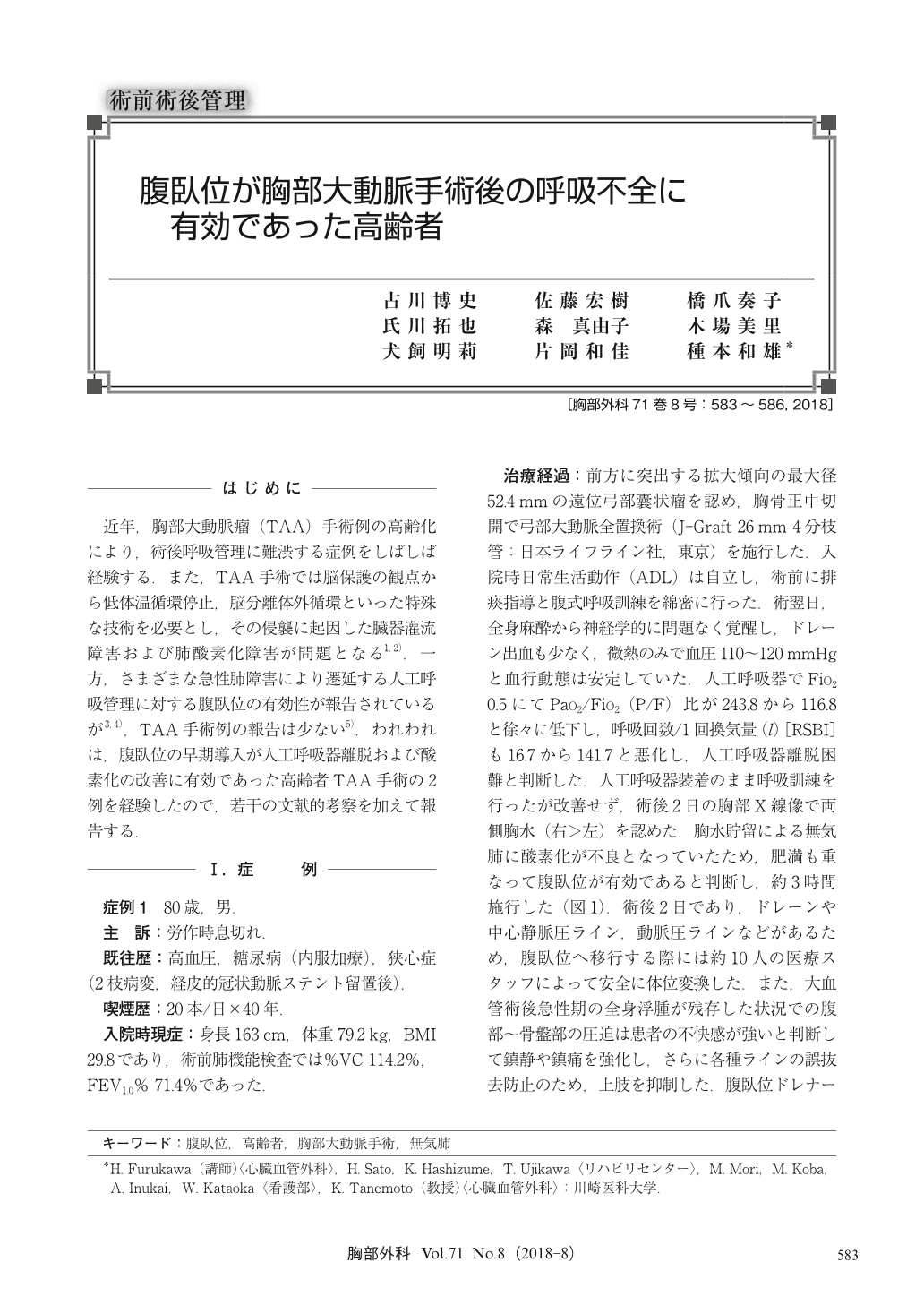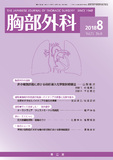Japanese
English
- 有料閲覧
- Abstract 文献概要
- 1ページ目 Look Inside
- 参考文献 Reference
近年,胸部大動脈瘤(TAA)手術例の高齢化により,術後呼吸管理に難渋する症例をしばしば経験する.また,TAA手術では脳保護の観点から低体温循環停止,脳分離体外循環といった特殊な技術を必要とし,その侵襲に起因した臓器灌流障害および肺酸素化障害が問題となる1,2).一方,さまざまな急性肺障害により遷延する人工呼吸管理に対する腹臥位の有効性が報告されているが3,4),TAA手術例の報告は少ない5).われわれは,腹臥位の早期導入が人工呼吸器離脱および酸素化の改善に有効であった高齢者TAA手術の2例を経験したので,若干の文献的考察を加えて報告する.
In order to demonstrate the clinical efficacy of prone positioning (PP), we reviewed 2 elderly patients with respiratory failure who underwent thoracic aortic surgery.
Case 1:An 80-year-old man with true thoracic aortic aneurysm (TAA) underwent total arch replacement under moderate hypothermia. Two days after surgery, PP was conducted for 3 hours to treat atelectasis and poor oxygenation. His respiratory state and oxygenation subsequently improved and he was weaned from ventilator assistance.
Case 2:An 82-year-old woman with early thrombosed acute type A aortic dissection and cardiac tamponade underwent emergency primary repair of the ascending aorta under moderate hypothermia. Six days after surgery, PP was conducted for approximately 3 hours to improve oxygenation. She was weaned from the ventilator 7 days after surgery.
The clinical courses of both cases after PP were uneventful. In order to improve the respiratory state of elderly patients after TAA surgery, PP is effective and useful.

© Nankodo Co., Ltd., 2018


